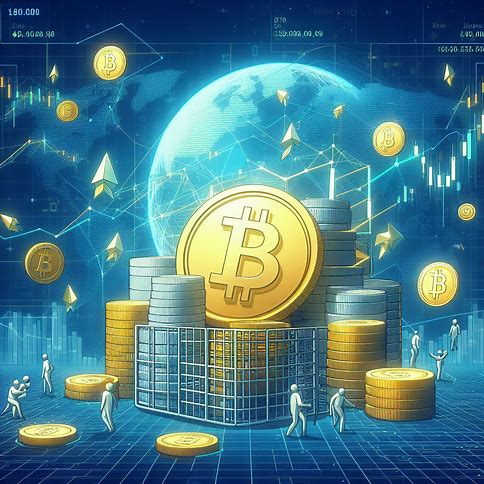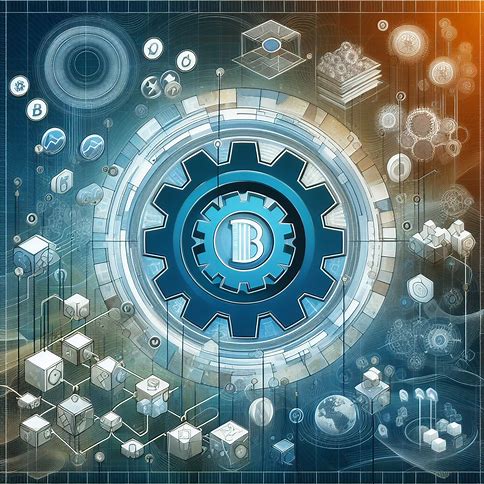Heard about Pi Network, the crypto you can mine on your phone? Wondering if it’s legit or just hype? Don’t worry; here is everything you need to know about the Pi Network.
What is the Pi Network?
Pi Network is a novel cryptocurrency and developer platform that allows users to mine PI coins or tokens using their mobile phones. Developed by a team of Stanford graduates, Pi aims to make crypto mining accessible to everyday users and build a robust peer-to-peer marketplace and developer ecosystem on the platform.
Some key features of the Pi Network are:
- Mobile-first, energy-efficient mining
- Mining rewards that halve each year (like Bitcoin)
- KYC identity verification to combat fake accounts
- Peer-to-peer marketplace for goods and services
- SDK for developers to build apps on the Pi platform
Pi operates on a mobile app where users click a button daily to receive their mining rewards. The mining is based on a fixed daily reward that is distributed among the network participants. The rewards diminish over time, creating a total supply of Pi coins that will ultimately reach 100 billion.
How does the Pi Network work?
Pi Network utilizes the Stellar Consensus Protocol (SCP) on a testnet of nodes that are run by users around the globe. SCP is known for its ability to achieve consensus quickly and its energy efficiency compared to proof-of-work blockchains like Bitcoin.
The Pi mobile app connects with the testnet and serves as the interface for mining, wallet storage, peer-to-peer transactions, and interaction with apps created by third-party developers. To start mining, users simply open the app and tap the lightning button once every 24 hours.
Users can boost their mining rates by building security circles and teams with other trusted members. The daily mining rate starts at 0.39 PI and may be increased by 25% for each active team member, up to a maximum of 5 members. Security circles provide a trust graph for Pi’s consensus algorithm. To verify that mining rewards are going to real individuals and not fake accounts or bots, Pi implements a KYC identity verification process. Users will need to validate their accounts to continue mining and fully participate in the network.
The Pi Network Ecosystem
Beyond just mining, Pi Network aims to build a full-fledged ecosystem and marketplace powered by Pi cryptocurrency. The project roadmap envisions several key components:
1. Pi Utilities
A suite of apps and utilities for Pi coin holders, including a peer-to-peer marketplace, app store, and cryptocurrency wallet. These tools will allow Pi users to transact and exchange goods and services directly with each other.
2. Pi SDK
Pi provides a software development kit (SDK) that enables developers to build decentralized apps (dApps) that integrate with the Pi blockchain. The goal is to create a thriving dApp ecosystem that drives the utility and adoption of Pi coins.
3. Pi Lockup
Pi will implement a lockup mechanism where a certain portion of mined coins is inaccessible for a period of time. This lockup is meant to encourage hoDLing, reduce selling pressure after the mainnet launch, and contribute to Pi’s scarcity and value over time.
The combination of lockup, diminishing mining rewards, and a fixed supply cap is intended to make Pi coins more valuable in the long run as the ecosystem grows and demand increases. However, the exact monetary policy and economics remain to be seen.
Pi Network’s Roadmap and Mainnet Launch
Pi Network is currently in the Enclosed Mainnet period, a transitional phase between testnet and full mainnet. The goals of this period are to stress test the blockchain, distribute mainnet coins to verified users, and grow the Pi developer community.
Key milestones on the roadmap include:
1. Mainnet Migration
Eligible users who passed KYC will have their balances migrated from the testnet to the live mainnet blockchain. This process is ongoing and requires users to complete additional checklist items in the app.
2. Mainnet coin distribution
After migration, users can continue mining to earn Mainnet Pi coins. The distribution will follow a strict schedule to prevent flooding the market. Coins will be gradually unlocked and released over time.
3. Open Network
Once the enclosed network period is complete and the blockchain is stable, Pi will open the network to external connectivity. This will enable connections with other blockchains and the broader crypto ecosystem.
4. Start of Trading
With an open network, Pi coins can be listed and traded on cryptocurrency exchanges. The team is working to ensure regulatory compliance and aims to get PI listed on top-tier global exchanges.
The exact timeline for the mainnet launch is not set in stone, as the development team is prioritizing security, stability, and regulatory compliance. However, steady progress is being made, and many expect a full mainnet launch within the next year.
Potential and Concerns Around the Pi Network
Pi Network has gained a lot of attention for its novel mobile mining model and vision of a more inclusive and accessible crypto economy. The project boasts a large and devoted community with over 35 million users.
Proponents believe that Pi’s approach could spur wider adoption of cryptocurrency, especially in developing countries where traditional mining is impractical. The focus on building an ecosystem and generating real-world utility is also seen as a strength.
However, there are also reasons for skepticism and concern:
- Unproven economics and value proposition of Pi coins
- Centralized control by the core team over mining rewards and coin distribution
- Regulatory uncertainty around Pi’s status as a security or commodity
- Potential for scams and fraud due to the large, global user base
- The technical challenges of scaling the blockchain while maintaining decentralization
Until Pi is fully decentralized and coins are openly traded, it remains an experimental project with uncertain prospects. Interested users should approach Pi with caution and not invest more than they can afford to lose.
Related: How To Mine Bitcoin On Android Legitimately In 2024
Key Takeaways
1. Pi Network is a mobile-first cryptocurrency that allows users to mine PI coins using their smartphones, aiming to make crypto accessible to all.
2. Pi utilizes the Stellar Consensus Protocol (SCP) and a unique mining model based on fixed daily rewards and halving, with a maximum supply of 100 billion PI.
3. The Pi ecosystem includes a peer-to-peer marketplace, developer SDK, and upcoming features like Pi Lockup and Pi Utilities to drive adoption and utility.
4. Pi is currently in the Enclosed Mainnet period, with ongoing mainnet migration, coin distribution, and goals to open the network and begin trading.
5. While Pi has a large community and an ambitious vision, there are concerns around its unproven economics, centralization, regulatory status, and potential for scams.
6. The mainnet launch and future development will be crucial to determining whether Pi Network can deliver on its promises and establish itself as a viable cryptocurrency.
Frequently Asked Questions
1: Is Pi Network a legitimate cryptocurrency?
Pi Network is a legitimate project in the sense that it has a real product (the mobile app), a dedicated development team, and a transparent roadmap. However, the long-term viability and value of Pi coins remain uncertain until the mainnet is fully launched and PI is traded on open markets.
2. Can I mine Pi coins on my phone?
Yes, Pi Network allows users to mine PI coins using the mobile app. However, the mining process is more akin to a daily rewards system, as it doesn’t utilize the phone’s hardware for complex calculations like traditional proof-of-work mining.
3. Is the Pi Network free to use?
Yes, the Pi mobile app is free to download and use. There are no fees or costs associated with mining, holding, or transferring Pi coins within the network. However, in the future, there may be transaction fees or costs for certain services within the Pi ecosystem.
4. When will Pi coins be worth real money?
The value of Pi coins will be determined by supply and demand once they are traded on cryptocurrency exchanges. This will likely occur sometime after the mainnet launch and migration of balances. It’s impossible to predict the future price or guarantee that Pi coins will have significant monetary value.
5. Can I withdraw or sell my Pi coins?
Not yet. Pi coins are currently not available for withdrawal or trading, as the project is still in the Enclosed Mainnet period. The development team is working on integrating with exchanges and allowing open trading of PI, but no specific timeline has been given.
6. Is my Pi wallet secure?
Pi Network employs standard security measures such as encrypted storage and two-factor authentication. However, as with any cryptocurrency wallet, users are responsible for securing their own private keys and protecting against unauthorized access. It’s recommended to use strong, unique passwords and enable all security features in the app.
7. How can I use Pi coins?
Currently, Pi coins have limited utility within the Pi Network ecosystem. Users can transfer coins to other users and engage in basic peer-to-peer transactions. In the future, Pi aims to build a robust marketplace and dApp ecosystem where PI can be used for a variety of goods, services, and applications.
8. What is the future outlook for Pi Network?
The future of Pi Network depends on several key factors, including the successful mainnet launch, regulatory compliance, user adoption, and development of the ecosystem. If Pi can overcome technical and regulatory hurdles, attract developers and businesses, and generate real-world utility, it has the potential to become a significant player in the cryptocurrency space.










